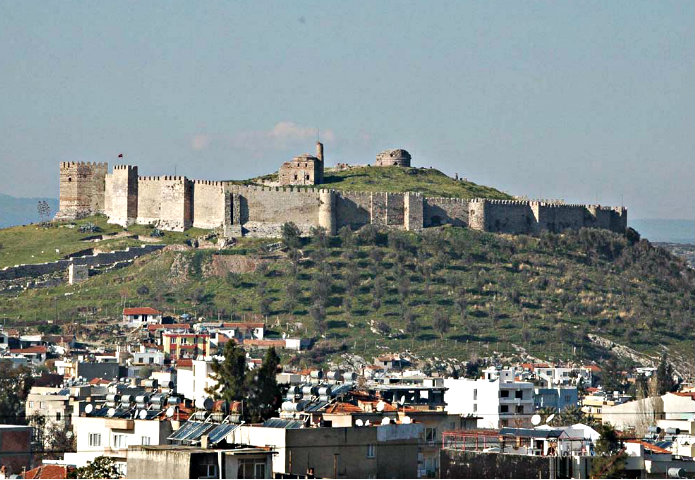Economic Review of Turkey in 2011 & Forecast for 2012
 It is clearly understood from the messages delivered by Central Bank of Turkey that it will be essential to maintain the flexibility in monetary policies as we are very likely due to face high level of uncertainties about the course of global economy in 2012, as well.
It is clearly understood from the messages delivered by Central Bank of Turkey that it will be essential to maintain the flexibility in monetary policies as we are very likely due to face high level of uncertainties about the course of global economy in 2012, as well.
Another important message is that CBRT is determined to enhance its communication strategy in order to increase the predictability by the markets.
A very significant point is that CBRT will further tighten the monetary policy (announcement on December 29th) to comply with the newly announced Monetary and Exchange Rate Policy for 2012.
THE ECONOMY PERFORMED WELL IN 2011
In 2011 Turkish economy performed quite well in spite of negativities in both local and global markets on the contrary to concerns the country could go through a troublesome period.
In fact, Turkey managed to achieve a growth rate of 8,2% in the third quarter of 2011 which was certainly well above expectations.
After a revision of 11.6% made to the first quarter growth figure of 12%, the country’s growth for the first 3 quarters of 2011 was recorded as 9,6 percent as compared to the same period of 2010.
Private consumption and investment expenditures
Private consumption and investment expenditures figures has shown a tendency to decrease in compliance with the policies implemented to control economic activity. This in return has led to a slowdown in imports and for the first time since the third quarter of 2009 it is observed that net exports have made a positive contribution to the growth.
Slowdown in domestic economy in December
Nevertheless it is worth mentioning at this point that real sector was looking at the future of the economy in a slightly more pessimistic manner in November 2011, opposed to the consumer confidence index which increased by 1.3 points to 91 in the same period.
As for capacity utilization ratio (CUR) this figure experienced a significant decrease to 75.5 percent, in December which may be another factor for the pessimistic view shared by the real sector.
Unemployment
Turkey has witnessed the lowest unemployment rate since 2001 which was around 8.8 percent after a 2.5 points decrease.
The number of employed persons increased to 24,749 thousands during in said period with 40 percent of the growth in employment coming from services sector and 27 percent from agricultural sector. The construction sector also displayed some very successful performance whic contributed to the growth in said period.
Foreign Trade Deficit
In November, foreign trade deficit narrowed which was also due to the rise in exports.
In November, compared to the same month of the previous year, exports and imports increased by 18.5% and 8.8%, respectively. In line with the ongoing deceleration in domestic demand, annual change in imports decreased to the lowest level of the last two years and the monthly foreign trade deficit has decreased for the first time since October 2009. Looking at the cumulative figures, in the first eleven months, foreign trade deficit widened by 55% compared to the same period of 2010 while imports coverage ratio was realized as 55.6%.
CURRENT ACCOUNT DEFICIT
In October, current account deficit was realized below expectations and it was financed by CBRT reserves to a considerable extent.
In October, current account deficit was realized below market expectations and narrowed to $4.2 billion compared to the previous month. Contraction in the trade deficit as well as relatively good performance in services balance due to the contribution of tourism and transportation sectors were effective in lower than expected current account deficit. Thus, the current account deficit increased to $65.1 billion in the first 10 months of the year, and to $78.6 billion on a 12-month cumulative basis.
Growth rate forecast for 2012
As for 2012, in compliance with the tightening measures implemented by CBRT and other authorities, the rise in private consumption and investment expenditures are expected to further slowdown which will in return lead to a decline in rate of economic growth.
Consequently, due to the tight measures imposed by authorities and the eventual effects of the slowdown in Turkey’s main export destinations (i.e. Europe) a growth rate of 3.5 percent is forecasted for the year 2012.
BANKING SECTOR
Turkey had to suffer much from ups and downs in the banking sector in the past. In fact, several banks went bankrupt and clients with deposit accounts were not able to get their monies back.
Nevertheless this was a very good opportunity to learn for the sector as well as the government and today the Turkish banking sector is not vulnerable to challenges such as global (or local) crisis.
As for the performance of the sector in 2011
- Total deposit volume increased by 13 percent compared to previous year.
- In the same period increase in TL deposit was 4.7 %
- FX deposits increased by 31.8 % in terms of TL and 8% in terms of USD
- It was observed that deposit increases were not as impressive as the previous year certainly due to the increase in investment and consumption spending in addition to the reserve requirement arrangements made during 2011.
Exchange rate adjusted credit volume increased by 21.5%
As of December 23rd, 2011, total credit volume increased by 28.3% compared to the previous year-end. When adjusted for the exchange rate, the increase in credit volume receded to 21.5%.
In this period, FX loans in USD terms rose by 13.9% while TL loans increased by 24.3%.It was seen that the increase in FX loans in USD terms has been significantly lower due to the high volatility in FX rates.
Net FX position of the banking sector was realized as (+) $723 million
As of December 23rd, 2011, net FX position of the banking sector was realized as (+) $723 million. Banks’ on-balance sheet FX position was (-) $20,700 million while off-balance sheet FX position was (+) $21,422 million.
EXPECTATIONS
The risks to global economy, mainly stemming from the Euro Area, are expected to persist during 2012. In this context, despite the comparative advantage in exports coming from the rise in FX rates, external demand is not anticipated to recover quickly in 2012. CBRT, after having further tightened the monetary policy to contain the secondary effects of the rise in inflation, is expected to keep its stance for a while. In addition, due to the fact that the domestic demand will increase only gradually, it is anticipated that the real economic growth will slow down and the credit volume will increase at a more moderate pace in 2012 compared to 2011.
Editor, BTT
SOURCE: BANKING SOURCES




